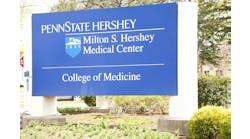At VCU Health, Ensuring Progress on Diversity, Equity and Inclusion
Leaders across the VCU Health System in Richmond, Virginia, have been working for many months now to advance diversity and inclusion across the integrated health system, for all those involved with the system, as staff members, clinicians, associates, patients, and families. Earlier this year, Healthcare Innovation interviewed Dr. Marcelle W. Davis, after she was elevated to vice president of diversity, equity and inclusion (DEI), at the end of last year.
The VCU Health System has demonstrated its commitment to DEI issues in a number of ways, including through a statement of commitment. As the organization’s website states, “We are committed to treating all patients with dignity and respect. That said, we acknowledge that there have been times when we have fallen short of this goal and damaged the trust communities place in us that is vital for us to best serve our patients. We recently ratified a Diversity, Equity and Inclusion statement that will guide the future of our institution. As part of it, we vowed to fearlessly accept criticism and continuously learn from our mistakes with transparency and humility. Our history can teach us valuable lessons to make VCU Health and the communities we serve better places.”
And the Diversity, Equity and Inclusion Statement itself reads thus:
“All members of the VCU Health community prioritize individual dignity and strive to promote a culture of diversity, inclusivity, and equity in a supportive patient care, learning, research, and work environment.
Every VCU Health patient and their family, as well as our team members and learners, deserve to be treated with respect, dignity, and professionalism.
We are committed to creating a community that recognizes and embraces diverse backgrounds, identities, and lived experiences. We will not tolerate or condone discrimination.
We are also committed to delivering health care in a manner that respects diversity and inclusivity with the full intent of ensuring an optimal patient experience and achieving better health outcomes for all.
We will actively work to dismantle systemic racism and inequalities that may be entrenched in our health system.
Our commitment is relentless and we seek to be faithful to it in all our actions. We will fearlessly accept criticism and continuously learn from our mistakes with transparency and humility throughout this journey. Together, we will make VCU Health a better place, be a stronger community partner, and earn the trust of all.”
Another colleague at VCU Health who has been deeply and broadly involved in the work of advancing diversity, equity, and inclusion, is Sheryl Garland, chief of health impact for VCU Health, and executive director at the health system’s Office of Health Equity. Editor-in-Chief Mark Hagland spoke with Sheryl Garland earlier this year, to get her perspectives on the opportunities and challenges in this area. Below are excerpts from that interview.
How long have you been in your position?
I have been in this position as chief of health impact for six years; meanwhile, the role of executive director for our Office of Health Equity was established in September 2021.
Was the Office was created in September 2021?
It was formally established in September, but we had launched a health equity initiative in the fall of 2016. We had been doing the work in a sort of collaborative format, and decided that because the work is so important, and we have a lot to do. Our senior vice president for VCU health sciences, Art Kellermann, M.D., M.P.H., said we should do this. We encompass four health professional schools: medicine, dentistry, nursing, and pharmacy, plus the College of Health Professions. Dr. Kellermann is also the CEO for VCU Health System. So under him are VCU Medical Center, Children’s Hospital Richmond, plus Community Memorial Hospital, Tappahannock Hospital, and MCV Physicians, our faculty practice plan.
In other words, you’re working on this across the health system and the university?
Yes.
What are your team’s overall goals?
Our overarching mission is to figure out how to integrate equity into the core mission of our organization: patient care and services, education and training, and research. And under each of them, we’ve developed specific strategies. For example, under education and training, we’ve launched a history and health initiative that’s taking a look at the history of our organization; we’ve been around since 1838. I found out by accident that our medical school was the only medical school in the South that stayed open during the Civil War. So we have spent the past year trying to tell our story, and being very transparent about who we are as an organization and how our policies and historical practices have helped to shape who we are as the largest safety-net organization in the commonwealth of Virginia. We’ve been focused on helping our own faculty, staff, and students to understand…
And, specifically, with regard to the health system, what are the areas of focus?
One of course, during the most intense months of the pandemic, related to COVID-19; we worked with our VCU Center for Inter-Professional Education, in the Medical School, to launch a vaccine corps compromised of students and faculty trained to provide vaccines through local health departments, safety-net organizations like FQHCs [federally qualified health centers] and free clinics, and our own hospitals, to provide vaccines. We had over 800 volunteers who were trained, and they were trained to give shots. Some did administrative duty, and over 79,000 shots were given. We were able to provide the workforce to support the distribution of vaccines in the community.
We’ve also worked very hard with community-based organizations to increase outreach to the Latinx community, as COVID has disproportionately affected communities of color. It turned out that a large percentage of our pregnant Latina moms were COVID-positive. So we developed infographics to overcome that health literacy barrier in that population. And finally, we’ve been involved in launching initiatives related to the social determinants of health. We had done studies several years ago that found that at least 25 percent of our patients identified at least one social determinant. So, working closely with food banks and social services agencies. We’ve worked closely with FeedMore, the Food Bank for the central Virginia area. Launching food-is-medicine programs: we screen for food insecurity. We started in an inpatient unit and then expanded to outpatient services, provide food boxes and then connect them with social service agencies and help them apply for benefits programs such as WIC and SNAP.
What do the next couple of years look like for you and your team?
We are very focused on introducing this idea of identifying and addressing the social determinants of health into our clinical environment. We really are trying to shift the thinking in our medical center from healthcare to people’s overall health. And we’ve been building our models off the University of Wisconsin’s County Health Rankings Model. You can Google that. The University of Wisconsin has a Population Health Institute, and several years ago, partnered with the Robert Wood Johnson Foundation to create that model. They do an assessment of every state, and create a report for each state ranking their counties and cities based on health outcomes and factors. And that county health rankings model basically says that if you look at the factors influencing health status, there are four critical factors. About 20 percent is related to access to care; about 30 percent is related to health behaviors (smoking, drinking, exercise); about 40 percent is truly related to social factors; and 10 percent is related to physical environment. So about 50 percent of what influences health outcomes is related to social determinants of health. And if you’re interested in what influences health, you have to be interested in those factors.
You’re going to continue deepening your work around the social determinants of health, then?
Yes, the social determinants of health, and working on collaborations inside the university, the health system, and more importantly, building relationships with community-based organizations.
So you’ll be doing as much as possible, while also focusing on core health system mission?
That’s a great question. Part of the way to address this is to remove the boundaries. Without collaboration, I’m not sure how any health system, community-based organization, or public entity, will solve these problems that require collaboration to resolve. No one type can resolve these issues by themselves. That means that health systems need to step back and understand what the issues are that are occurring in the communities where their current and potential patients live, and how those issues impact healthcare delivery. I truly believe that we provide exceptional-quality healthcare. But if we give an individual a discharge plan that says you need rest, to eat well, and to exercise, if a person is homeless and has no way of consistently access healthy foods or lives in an environment where they can exercise, for example—if we are serious about that person’s health improvement, we do need to figure out how we address their environment. So we have to look beyond those traditional boundaries and talk to those partners who are experts in those area.
What is the composition of your team?
I have four people on my team, but we collaborate with departments and divisions across the organization. I report up to Dr. Kellermann.


